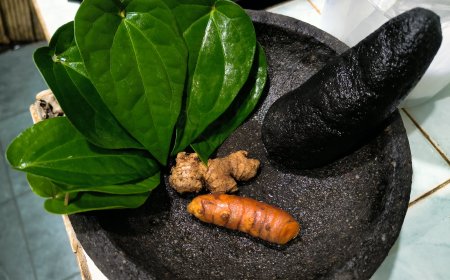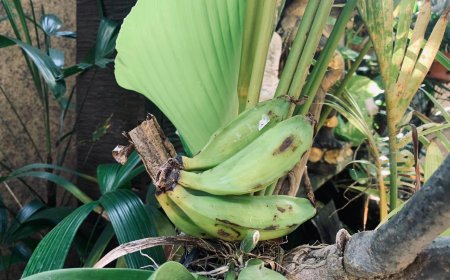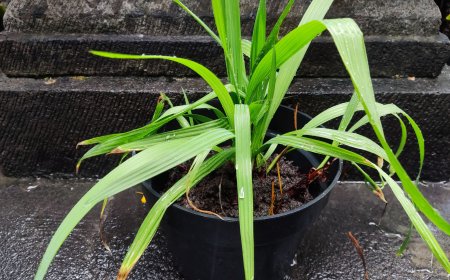Utilization Of Tapak Dara Medicinal Plant In Traditional Medical Bali
The Tapak Dara plant, also known as Catharanthus Roseus or water henna flower, has healing properties that have been utilized for generations in the Balinese medicinal tradition. This article discusses the benefits of the tapak dara plant in traditional medicine, its claimed health benefits, and the importance of this cultural heritage in maintaining the well-being of the Balinese people.

Usadha is the science of traditional Balinese medicine. In Hinduism, medicine belongs to the fourth Veda, the Atahrva Veda. This medical science has poly teachings and the teachings are related to the way of treatment and ceremonies in self-purification. Etymologically, Usadha comes from the Javanese antique which means medicine. Usadha also means levies from Sanskrit which means herbs used for medicine. This article will focus on Ushada Rare. Ushada Rare is a treatment intended for children who have signs of illness such as weakness without energy, convulsions, red eyes, and others. Children affected by this disease will be given the appropriate herb medicine. One of them can utilize the Tapak Dara plant.
What is the Tapak Dara plant?
The Tapak Dara plant, also known by its scientific name Catharanthus Roseus, is a plant native to Madagascar and belongs to the Apocynaceae family. This plant is known for having beautiful flowers and is often used as an ornamental plant. In addition to its beauty, the periwinkle plant also has important medical value. The plant has dark green leaves and brightly colored flowers that come in many varieties, including white, red, and purple ones. Tapak Dara contains alkaloid compounds that have medicinal potential. The use of Tapak Dara in traditional Balinese medicine is a reflection of the complexity of culture, environment, and science.
How is the Tapak Dara Plant used in Traditional Medicine?
In Bali, the Tapak Dara plant can be used to cure various diseases. Starting from the leaves, flowers, and roots of this plant can be processed into herbal concoctions, teas, or ointments. Tapak Dara has been proven to have anti-bacterial, anti inflammatory, and anti cancer properties, so it is used to treat various health problems. In addition to its use as medicine, the tapak dara plant is also often used in various Balinese rituals and ceremonies. While Tapak Dara flowers are often used as decoration in a series of offerings to the gods or used in wedding processions. This shows that the tapak dara plant has an important role in the daily life and spirituality of the Balinese people.

Tapak Dara Flower (Photo Source: Editorial Collection)
Here are some of the key health benefits of the Tapak Dara medicinal plant:
Diabetes Treatment: Several studies have shown that tapak dara extract can help control blood sugar levels in the body. This is particularly useful in the treatment of diabetes, which is becoming an increasingly common health problem in Bali. Anti cancer: The tapak dara plant contains the compounds vinblastine and vincristine, which have been shown to have anticancer properties. They are used in the treatment of various types of cancer, including leukemia and breast cancer. Malaria Treatment: In Bali, the tapak dara plant is used in traditional medicine to treat malaria. Its extract has been shown to be effective against the malaria parasite. Treatment of Digestive Disorders: Some parts of the tapak dara plant are used to relieve digestive disorders such as diarrhea and constipation. Treatment of Infections: The leaves of tapak dara contain antibacterial and antiviral compounds, so it is used in the treatment of respiratory tract infections and other diseases.
The utilization of Tapak Dara in traditional medicine in Bali not only reflects the rich traditional medical knowledge, but also illustrates the Balinese people's harmonious relationship with nature and culture. Along with the development of modern science, this plant also opens up new opportunities for research and development of more effective medicines. By maintaining a balance between tradition and innovation, the use of Tapak Dara continues to be an integral part of daily life in Bali.
Here is how to use the Tapak Dara Medicinal Plant in traditional medicine in Bali:

Tapak Dara Plant (Photo Source: Editorial Collection)
Leaf Use, Drinking Leaf Decoction Water: Wash some fresh Tapak Dara leaves, then boil them with water. Once the water has cooled, drink the boiled water. It can be used to treat fever, diabetes, and flu symptoms. Root Use, Treating Toothache: Wash the roots of Tapak Dara thoroughly, then chew them gently or apply them to the aching tooth. Use in Religious Ceremonies: Tapak Dara medicinal plant is also often used in various traditional rites and ceremonies in Bali. Its use is as part of offerings or worship in the Hindu religious tradition in Bali.





























































